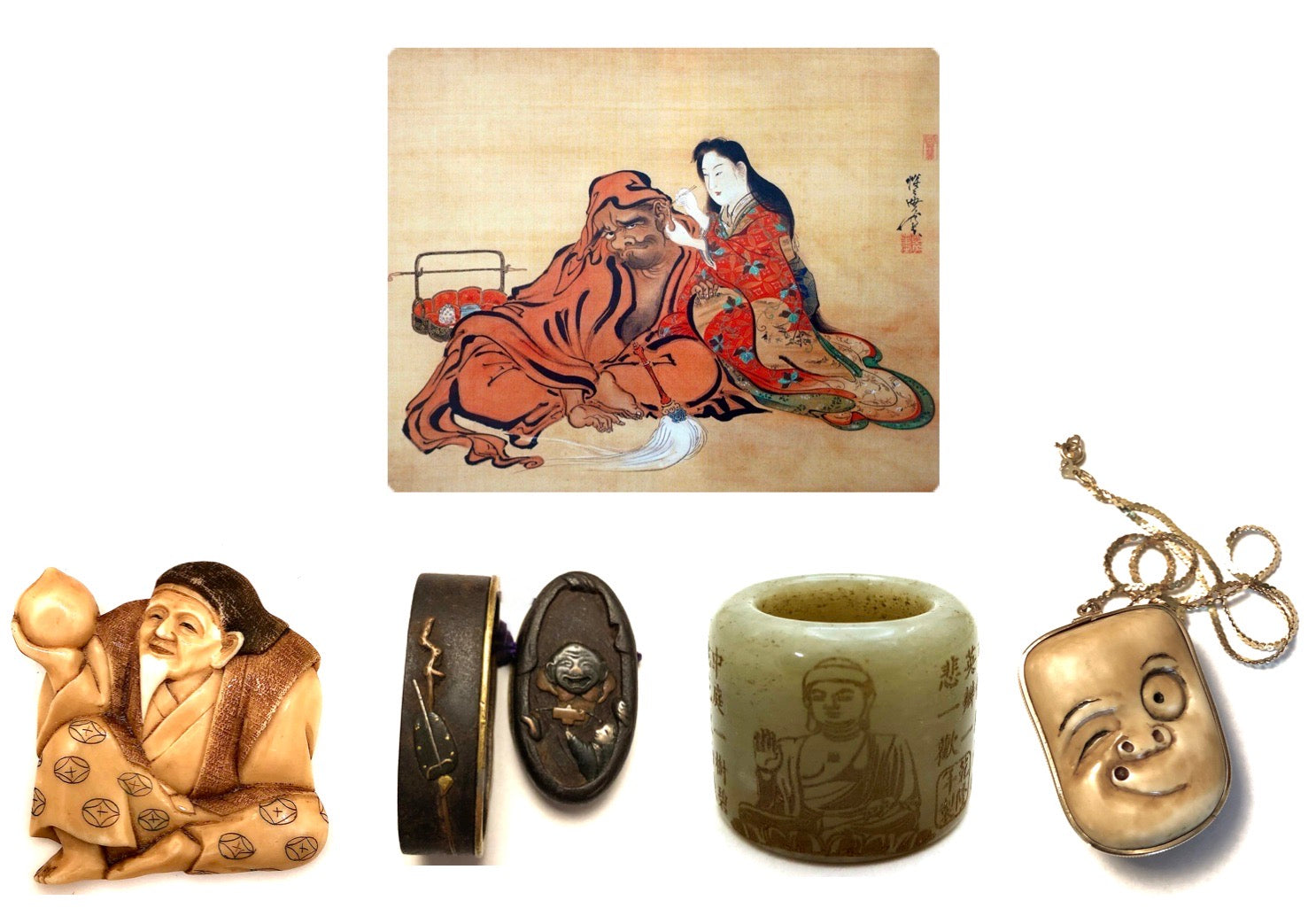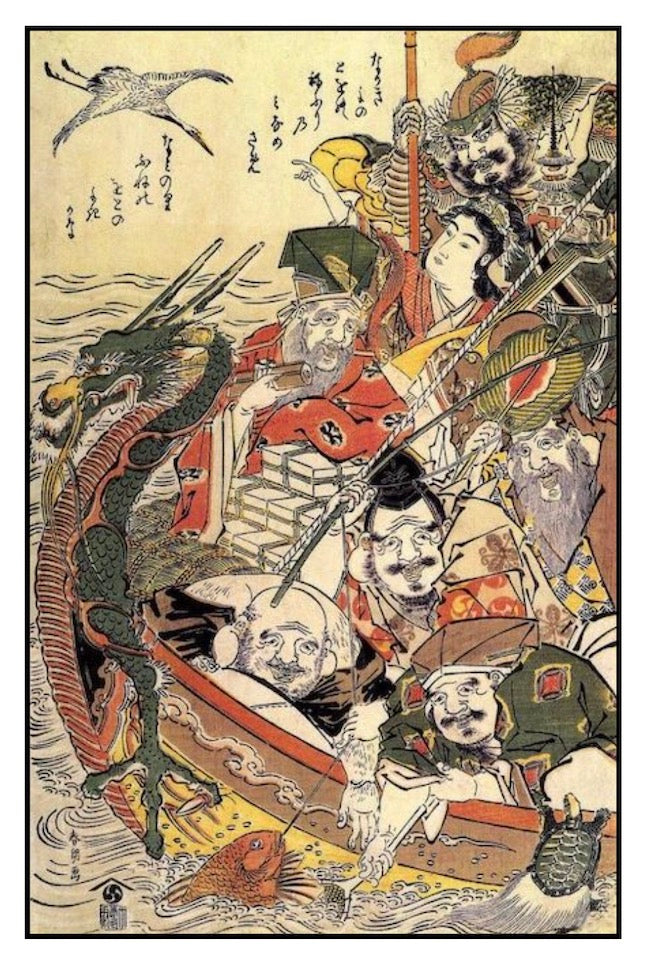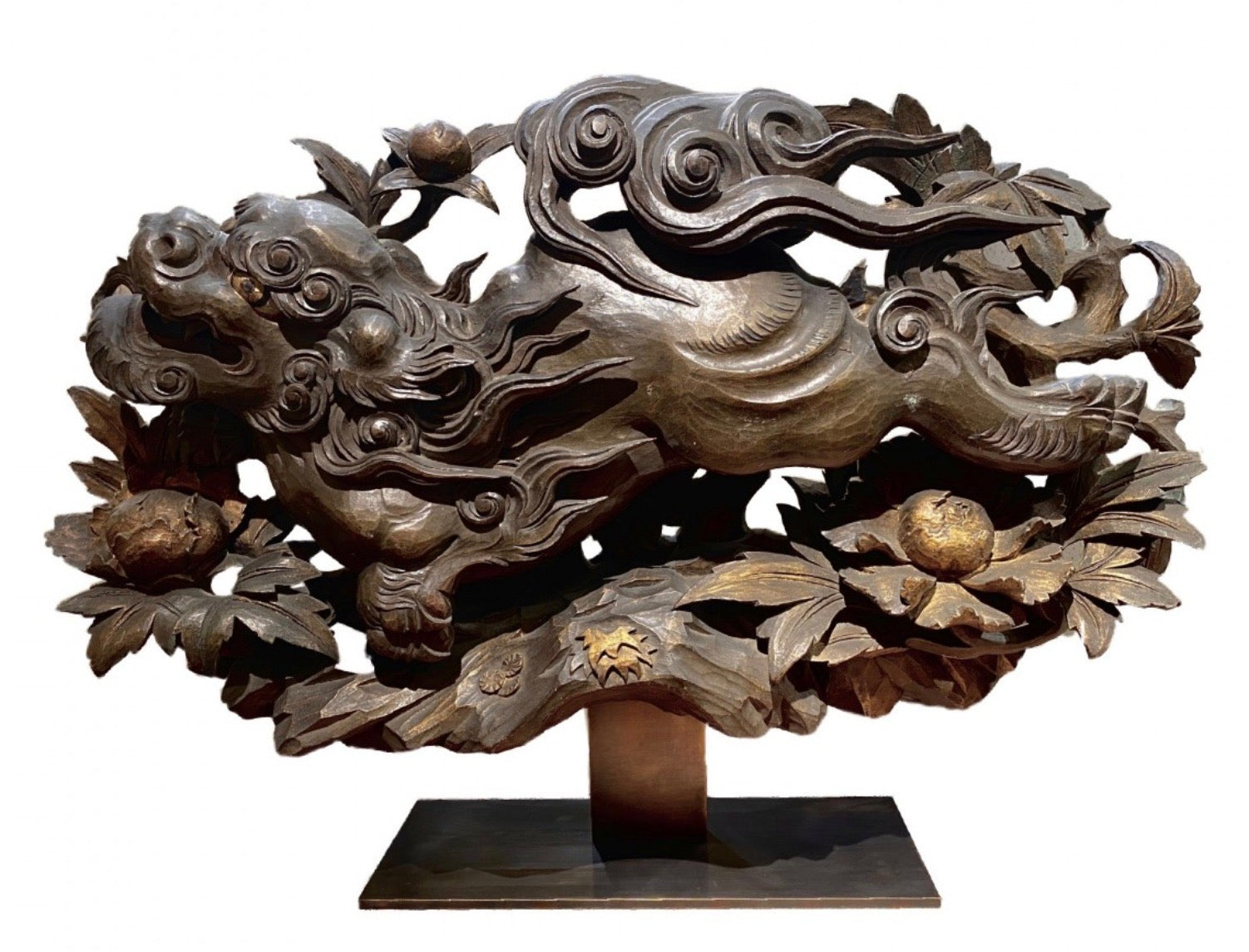“Preserving cultural history and outstanding Japanese craftsmanship”
Prior to the 18th century, most of the jewelry at the beginning of the Japanese fashion was focused on Kimono and Haori, (the traditional jacket worn over a Kimono), which were elaborately decorated, incorporating bright colors and subjects which were vividly embroidered and decorated.
Beginning in the Tokugawa Edo period, (1603-1868), hair of both sexes was worn long, looped, or braided, and dressed with elaborate hairpins of jewels and combs along with magatama, which were pierced beads to be strung into hair ornaments. Later hair accessories were created in more common forms of which the Western world called jewelry. Because jewelry was previously outlawed throughout Japan many decorative objects like hairpins, (Kanzashi) were designed to have an earpiece or small spoon at the end to clean ears, and hence were considered important for good hygiene thus permitted, (note the woodblock image of Daruma and the Oiran in the title image). The Geisha and Courtesan classes were the first to introduce hair jewelry, but it was not worn by women of other classes. From this period on the use of ornaments was mainly an extension of religious-based beliefs and only depicting auspicious animals and figures or samurai motifs. In the same period, men were permitted the use of the inro, a small tiered box for tobacco, medicines or confections, which were beautifully carved, or painted in lacquer, and inlaid with mother-of-pearl or precious metals, (darkened copper base with gold and silver) referred to as Shakudō and Hon-zogan, (metal inlays), in strikingly naturalistic motif. These were originally used to decorate and construct Japanese sword fittings. In contemporary Japanese jewelry, it can be found in Mokume Gane (from the Japanese word for “wood grain” Mokume-Gane is a mixed-metal laminate showing distinctive layered patterns). The ivory belt toggle called netsuke, always delicately and often intriguingly carved, was the other major personal ornament that customs allowed other than pouches to hold coins and made to be carried in the deep sleeves of Kimono and Haori.
Nothing in the history of Japanese craft and taste corresponds to the variety of types of jeweler’s work in the West until contemporary times, when Japanese craftspersons began to repurpose and expand crafts and objects made for other purposes into a variety of jewelry objects. These include: brooches, bracelets, hair fashion accessories, personal body incense containers, and small and diverse pendants which became in fashion particularly in the 18th/century and adding earrings and rings as time and exposures to the western world grew. Below are a few exceptional, antique fashion art pieces that surfaced throughout the small islands of Japan and now are rather expensive works of art.






